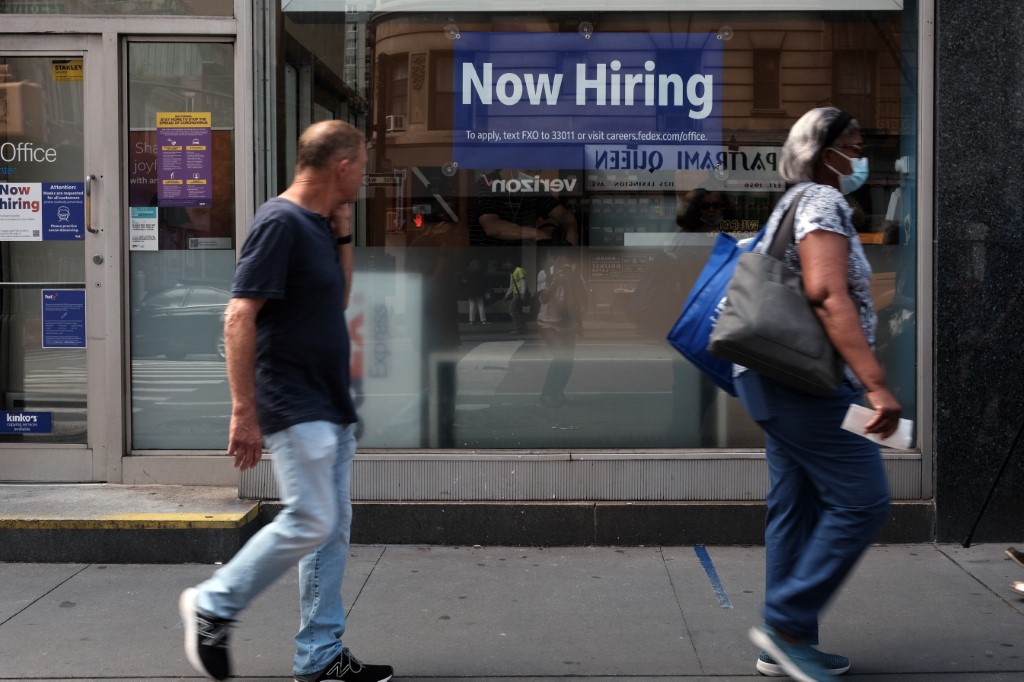The pandemic is not over, but it is sure getting relatively under control, thanks to vaccines and lower death rates. Almost everyone is bracing for a return to "normal" life, except for when it comes to work.
In the US, employers have been reporting shocking numbers of workers quitting their jobs in recent months. The job market in the United States is now in need of millions of workers, but very few people are willing to take jobs per pre-pandemic rules.
According to the U.S. Bureau of Labor Statistics, there are near 10 million job openings across the country, pointing at a sharp shortage of workers to get the work done.
These numbers have followed months of warnings that talked about America's unprecedented "Great Resignation", or the "Big Quit", which has followed the COVID19 pandemic.
Is it the Great Resignation or just the Great Realization that people deserve better pay, better working conditions, better hours, and better leadership?
— Social Media Tea (@SippinSocialTea) February 22, 2022
Not only is the US job marketplace flooded with "hiring" ads for positions that are barely being filled. Workers are also now mobilizing for unions and labor organizations that can help them score better working conditions, higher pay, and other demands.
During the second half of 2021, about 2 million American employees quit their jobs, which was the highest number ever recorded in the US.
This month, workers at many US-based Starbucks branches have been organizing and joining a union following the termination of seven employees in Memphis, Tennessee earlier this month.
Such new trends in the job market in the US at a time workers were expected to be highly competing to return to work has triggered many questions over the decisions that can be taken by administrations and managing boards to help businesses overcome the "Big US Quit", which can potentially transcend US borders and become a global phenomenon.
BREAKING: Starbucks has fired one of the leading @SBWorkersUnited union organizers in Buffalo.
Cassie Fleischer worked at Starbucks for five years. She helped Elmwood become the first unionized store in company history and is on the union's bargaining committee. pic.twitter.com/GDg8vYydAi— More Perfect Union (@MorePerfectUS) February 21, 2022
The Great Resignation: What Can Be Done?
Conversations between senior executives and human resources experts in US companies are now centered around the ultimate solution for this new trend, in which millions of people are choosing not to get involved in the workforce, even after stimulus checks that were issued in the wake of COVID19 lockdowns have stopped.
Many managers and business owners are bidding on time during which savings of young workers will run out, forcing millions of them to start taking jobs again, many are contemplating the many reasons that have caused this unexpected shift in mindset and priorities for younger generations, especially Millennials and Gen Zs. Even though higher pay is amongst the top concerns of most young people looking for jobs, it does not seem enough for them to decide to take a job, just yet.

Whether it is the striking difference they experienced during COVID19 lockdowns, such as the new working settings such as remote and flexible hours ones, businesses now need innovative techniques to "lure" employees back in.
Many white-collar workers are also reporting changing attitudes towards the whole notion of "living to work" that was followed prior to the pandemic, and seem more in favor of the "working to live" concept, during which they get to have more time to themselves, lives, families, and non-work-related activities.
Post-COVID19 workers are more likely to take remote or hybrid schedule jobs than in-office ones. Now that they have realized they can have more control over their time, place of residency, and work styles with minimum supervision, most Millennials, and Gen Zs would avoid the cost and the effort out into commutes and in-office life, and choose to work from home forever.
This is why more and more businesses are now shifting their focus to remote work that ensures the same levels of productivity of higher, such as Adobe, Amazon, Apple, Coinbase, Facebook, and others.
Besides offering flexible timing, remote options, some workplaces are testing 4-day weeks in a proposal that could provide workers with an extra day of unwinding, one that could eventually reflect positively on their performance and productivity.
Some businesses are also being more generous with benefits, hoping it helps them attract the picky workers who still do not see the old full-time job option fitting to their new lifestyles, such as higher pay, more off days, better medical insurance, signing bonuses, relocation expenses, in addition to some offers to pay workers' educational tuition, only to attract them in the long-term.
This extraordinary shift in interests and priorities seen in US workers' attitudes has the potential to spread outside of the United States borders if they succeed in changing the rules of the game and force permanent changes to the rules applied in workplaces.








